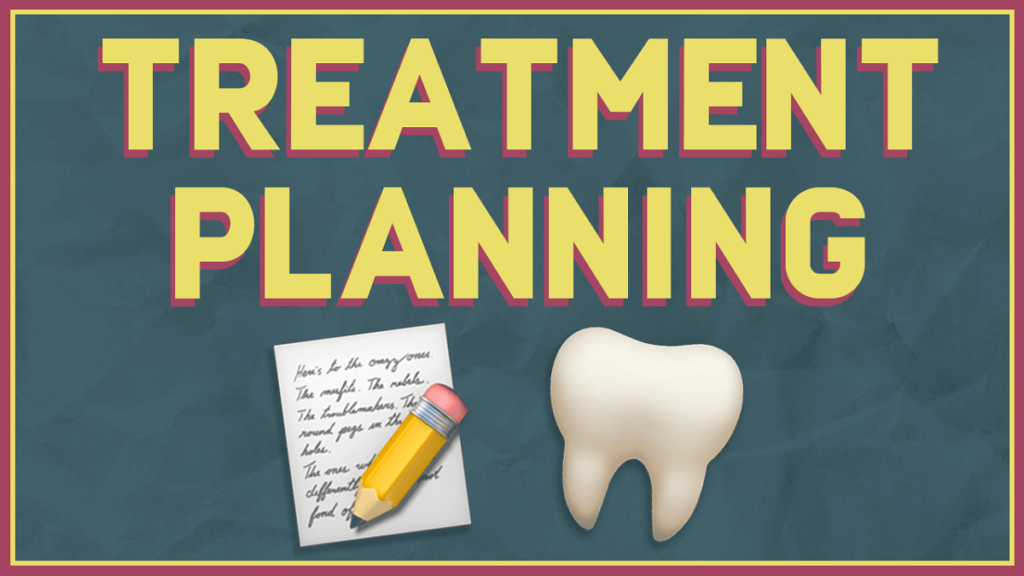When it comes to treatment planning in dentistry, accuracy, personalization, and patient satisfaction play vital roles. The dentist is challenged to weigh clinical evidence, create a treatment hierarchy and address patient values in pursuit of the best care plan. Manage treatment strategies not only more effectively but also with high quality, utilizing innovative dental materials and solutions from professional dental manufacturer companies like Aidite. This article discusses some key tips and tricks to help you nail the treatment planning in dentistry, including comprehensive dental treatment planning, phased dental treatment plans, and patient centered treatment planning in dentistry. By the end, you will know not only what is a dental treatment plan, but also how to implement one in practice.

Understand What Is a Dental Treatment Plan
Now, before going into advanced tips, let me first explain what is a dental treatment plan. In other words, a formal plan that includes diagnostic results, treatment options and timelines, and predicted outcomes for each patient. This makes it clear to both the practitioner and the patient, allowing for expectations to be set and compliance to be improved. Providers like Aidite make it easier to design these plans by providing high-quality materials that can easily be incorporated into your workflow so that you can create more predictable treatment planning in dentistry.

Comprehensive Dental Treatment Planning: A Step-by-Step Process
Complete dental treatment planning forms the basis for successful treatment planning in dentistry. Instead of fixing piecemeal concerns, it addresses the mouth in its entirety, ensuring that not only are existing issues taken care of, but that any potential new ones are well-monitored and managed easily to promote systemic long-term oral health. Here is a guide that, when followed, will give you the step-by-step process to learn in detail the art and science of comprehensive dental treatment planning.
Step 1: Conduct a Thorough Patient Evaluation
A full assessment is the first step in formulating a treatment plan in dentistry.
- Full-Mouth Clinical Examination: A thorough evaluation of teeth, gums, soft tissues, occlusion, and TMJ to assess the full complement of active oral disease.
- Radiographic Analysis: Evaluate for hidden caries, bone loss, pathology, and other essential conditions utilizing panoramic, bitewing, and periapical radiographs
- Photographic Documentation: Take intraoral and extraoral photographs for records and patient communication
This step is the basis of accurate treatment planning in dentistry.
Step 2: Review Medical and Dental History
The importance of medical and dental history is one of the most important steps that should be observed before conducting any treatment planning in dentistry.
- Medical History: Check for any associated systemic diseases, allergies, medications affecting surgical intervention, and past surgeries in the same area.
- Dental History: Experience with inlays, crowns, veneers, etc. can provide a recall repetition. Revisit the background of one-time successful inlays.
Such an elaborate history aids in thoroughly informed, comprehensive dental treatment planning.
Step 3: Analyze Functional and Occlusal Relationships
In treatment planning in dentistry, the occlusal function cannot be neglected:
- Occlusal Analysis: Identify malocclusions, wear facets, premature contacts and parafunctional habits such as bruxism
- TMJ Assessment: Check joint movement, activity, crepitus, discomfort, and function.
- Muscle Assessment: Assess masticatory muscle tenderness and tonicity.
Functional analysis, if done correctly, preserves the long-term stability of comprehensive dental treatment planning.
Step 4: Assess Aesthetic and Smile Design Factors
One aspect of patient centered treatment planning in dentistry is esthetics:
- Facial Analysis: Researched harmony of the smile, support of the lips, and balance of the face.
- Tooth Proportion: Look into the dimensions, formation, position, and hue of your teeth.
- Patient Expectations: Discuss aesthetic wants early in consultations and make sure they align with things that can be accomplished.
This esthetics-oriented approach provides an opportunity for a comprehensive patient-oriented treatment planning in dentistry.
Step 5: Identify and Prioritize Treatment Needs
This steps-oriented approach towards treatment planning in dentistry is ensured by organizing treatment needs in the following manner:
- Urgent Care: Infections, pain, and acute condition treatments.
- Disease Control: Treat caries, periodontal disease, and other refractory oral health conditions
- Stabilization: Solve occlusal imbalances and functional issues
- Definitive Restoration: Prosthetic, cosmetic work, and long-term restorations.
It provides a framework for staged dental interventions as part of whole dental treatment planning.
Step 6: Develop a Custom Phased Treatment Plan
Success in treatment planning in dentistry is ensured by a personalized, stepwise plan:
- Phase 1: Control emergencies and control oral disease
- Phase 2: Correction of occlusal and periodontal health, functional rehabilitation
- Phase 3: Final Restorative Treatment: Crowns, implants, veneers, or full mouth reconstructions.
- Phase 4: Maintenance: Set plans for long-term recall appointments and hygiene processes
Structured, phased dental treatment planning is more patient-friendly and leads to predictable outcomes.
Step 7: Incorporate Digital Dentistry Tools
Digital tools in treatment planning in dentistry are a major part of a human-centred experience:
- Digital impressions: Capture extreme accuracy with no impression material.
- CAD/CAM Technology: Design and mill restorations precisely and efficiently.
- 3D Smile Design Software: Assist patients in envisioning their pre-treatment outcomes.
- AI Diagnostic Support: For early detection of caries, pathology, and optimal treatment planning.
The digital-compatible materials from Aidite allow for the integration of digital workflows into comprehensive dental treatment planning and phased dental treatment plans with ease.
Step 8: Engage in Shared Decision Making with the Patient
In dentistry, treatment planning in dentistry necessitates patient participation at all stages:
- Present Findings Clearly: Describe various procedure steps using digital simulations and visual representation.
- Discuss Treatment Options: Provide different treatment options, including pros, cons, and costs.
- Respect Preferences: Tailor the plan to the patient’s lifestyle, finances, and comfort level.
This collaborative approach reinforces patient centered treatment planning in dentistry and helps achieve better patient satisfaction.
By using, dentists can enable comprehensive dental treatment planning that allows dentists to be confident with each of the steps, ensuring strength and esthetics at every step of treatment planning in dentistry.
Patient Centered Treatment Planning In Dentistry
These days, patient centered treatment planning in dentistry is a must. This has multiple benefits, but primarily leads to greater trust and long-term adherence to treatment when a patient understands their options.

- Involve patients in decision-making: By guiding patients through treatment options, they will feel more empowered to assist in the decision-making process and more.
- Respect the patient’s desires: Adapting therapies to the lifestyle, phased dental treatment plans, and long-term goals of the patient increases the success and durability of therapy.
- Provide detailed explanations: An empathetic approach increases ease in patients, thus enhancing cooperation and appointments.
- Use digital mock-ups explanations: Shadowing habits and fitting treatments into a daily routine increase treatment success, and, importantly, longevity of results.
- Increase Patient confidence with communication: Patients are more likely to show up for an appointment and cooperate if they feel relaxed due to humane treatment.
With a wide range of Dental Materials that enable personalized, highly individualized dental treatment, Aidite continues to drive patient centred treatment planning in dentistry, ensuring that no matter which smile you choose, it’ll always be unique and beautiful.
FAQ
Q 1: How vital is treatment planning in dentistry?
Treatment planning in dentistry is the process of the dentist bringing together all the data concerning the individual in a systematic manner Healthcare & Medicine, in terms of clinical, functional & aesthetic needs, to identify and prevent Oral Musculoskeletal Disorders and to optimize output & outcomes for long term benefits and improvise on the patient satisfaction matrix & process.
Q 2: What does a complete treatment plan for dental treatment include?
An all-inclusive dental treatment strategy comprises a full mouth exam, radiographs, clinical history, occlusion assessment, aesthetic assessment, as well as a tailored, step-by-step strategy modified to meet both the instant and long-lasting demands of the individual.
Q 3: How is digital dentistry changing treatment planning in dentistry?
By facilitating accurate digital impressions, creating 3D simulations, making virtual treatment planning easier with AI-assisted (artificial intelligence) diagnostics, including lab work earlier in the process, reducing turnaround times, and creating more effective communication with patients, digital dentistry helps to treatment planning in dentistry more effectively, enabling more predictable and successful outcomes.
Conclusion
Combined with your clinical skills, the level of engagement you seek from your patient about their treatment and the high-quality materials you use, mastering Treatment planning in dentistry is an intricate beast. When fully implementing comprehensive dental treatment planning techniques and phased dental treatment plans along with patient centered treatment planning in dentistry, dentists can accomplish excellence with their patient care. Aidite is still a reliable partner, providing cutting-edge products that protect each step of the way from what is dental treatment planning to where everything needs to go. Using the right tools along with these practical tips will ensure your treatment planning in dentistry hits the highest standard.



